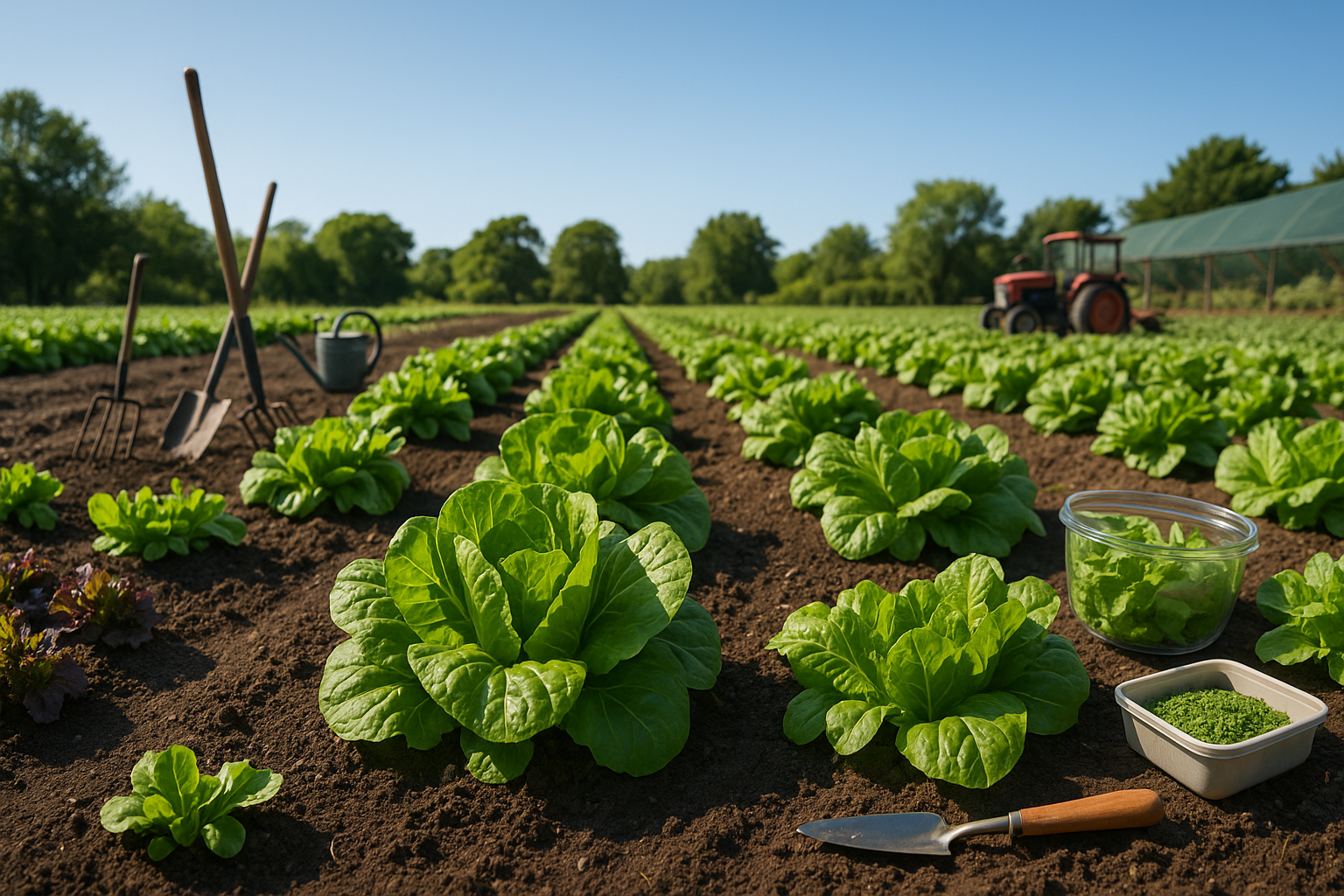Lettuce Farming: Is It Profitable?
Lettuce has become a favorite among both new and experienced farmers thanks to its fast growth and consistent popularity with consumers. As a cool-season crop, lettuce adapts well to various climates and farm sizes, whether you’re planting a handful of beds in a backyard garden or running a larger commercial operation.
One of the main draws is its quick turnaround; many varieties of lettuce can be harvested in as little as 30 to 60 days, allowing for multiple plantings and steady cash flow throughout the year. With supermarkets, restaurants, and local markets all seeking fresh leafy greens, demand rarely dips—and health-conscious trends only boost the appetite for crisp, fresh lettuce.
However, growing lettuce for profit isn’t without its challenges. Prices can fluctuate widely due to seasonal swings and competition, making it hard to predict final income. Lettuce is also highly perishable, requiring careful planning and prompt distribution to avoid waste and maximize returns. These factors can create uncertainty, especially for those new to commercial vegetable production.
So, is lettuce farming truly profitable, and what should growers watch out for to ensure success? In this article, we’ll break down the factors that affect lettuce farming profitability—including startup costs, best practices for increasing yields, common pitfalls, and market trend outlooks—so you can decide if lettuce is the right crop for your farming ambitions.
Understanding the Key Costs of Growing Lettuce
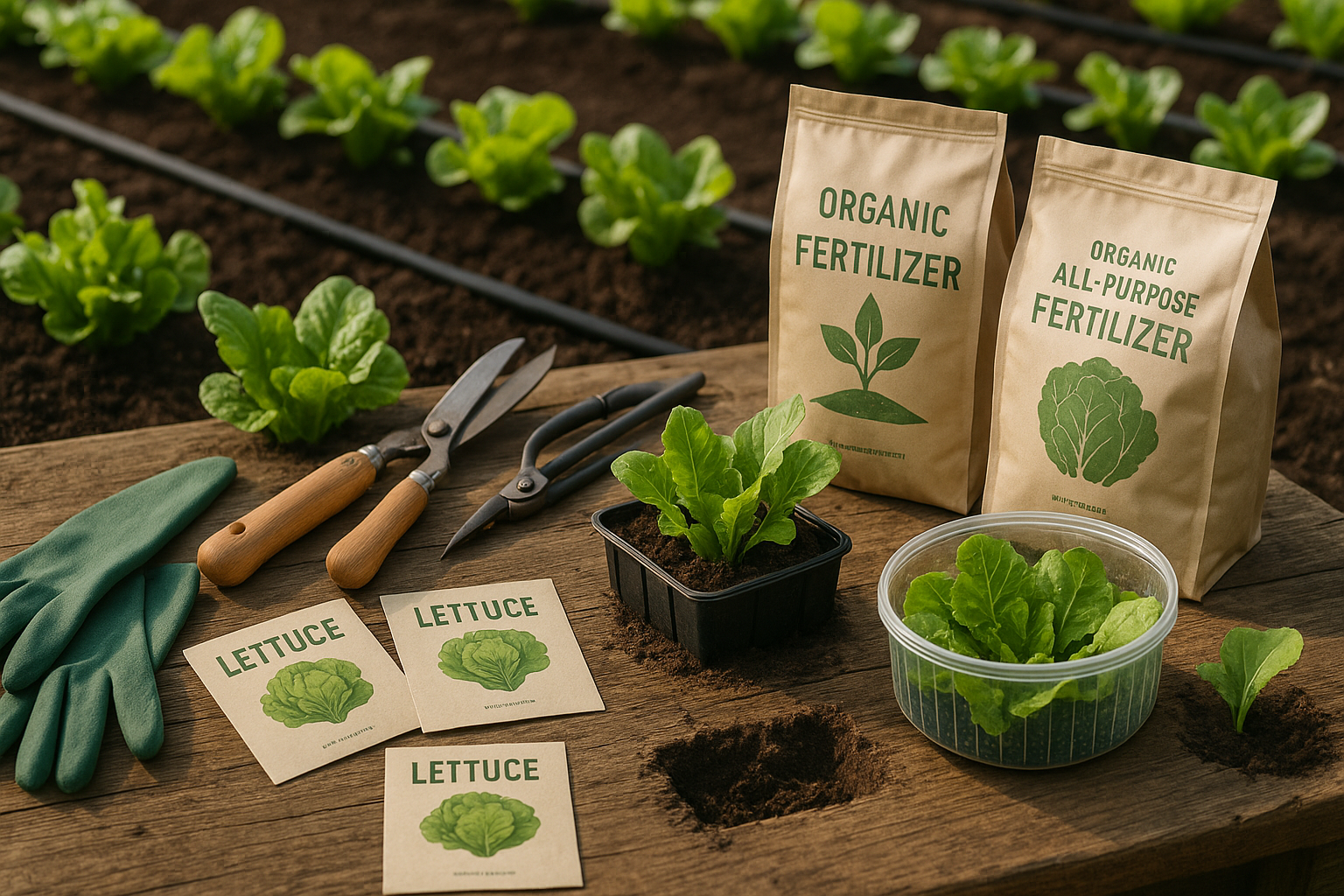
When planning to grow lettuce, understanding the key costs involved can help you avoid budget surprises and make your operation more efficient. At the startup phase, you’ll need to purchase quality seeds, which can range from a few dollars for a small home garden to hundreds for larger plots. Preparing the soil comes next, which may involve buying compost, soil amendments, or renting a tiller—expenses that add up quickly.
Fertilizers are essential, with organic options tending to cost more but often yielding healthier plants. Irrigation is another core expense; a home grower might get by with a basic watering can or hose, but commercial producers typically invest in drip lines or sprinklers, which require an upfront cost plus ongoing maintenance.
Labor is another significant factor—small-scale gardeners often handle tasks themselves, while larger operations need to budget for seasonal workers to help with planting, weeding, and harvesting. Pest and disease management is crucial and may involve purchasing organic pesticides, row covers, or biological controls, all of which can vary in price.
Equipment Needs and Scale
Equipment needs also differ based on scale. Small-scale growers might only require basic hand tools and protective gear, accelerating the learning curve and minimizing investment. By contrast, commercial lettuce farmers may need greenhouses, tractors, or processing equipment, which drive costs higher but also make larger harvests possible.
Hidden Costs to Consider
Beyond these planned expenses, hidden costs catch many new growers off guard. Pest outbreaks can wipe out sections of crops despite preventative measures, resulting in lost income. Weather extremes—like heavy rains or unexpected frosts—can damage lettuce beds overnight. There are also costs related to transporting fresh lettuce to markets, where delays might lead to spoilage and income loss.
For both hobbyists and commercial growers, careful planning and a small contingency fund can go a long way in smoothing out the unexpected bumps in lettuce production.
Estimating Lettuce Yield and Revenue
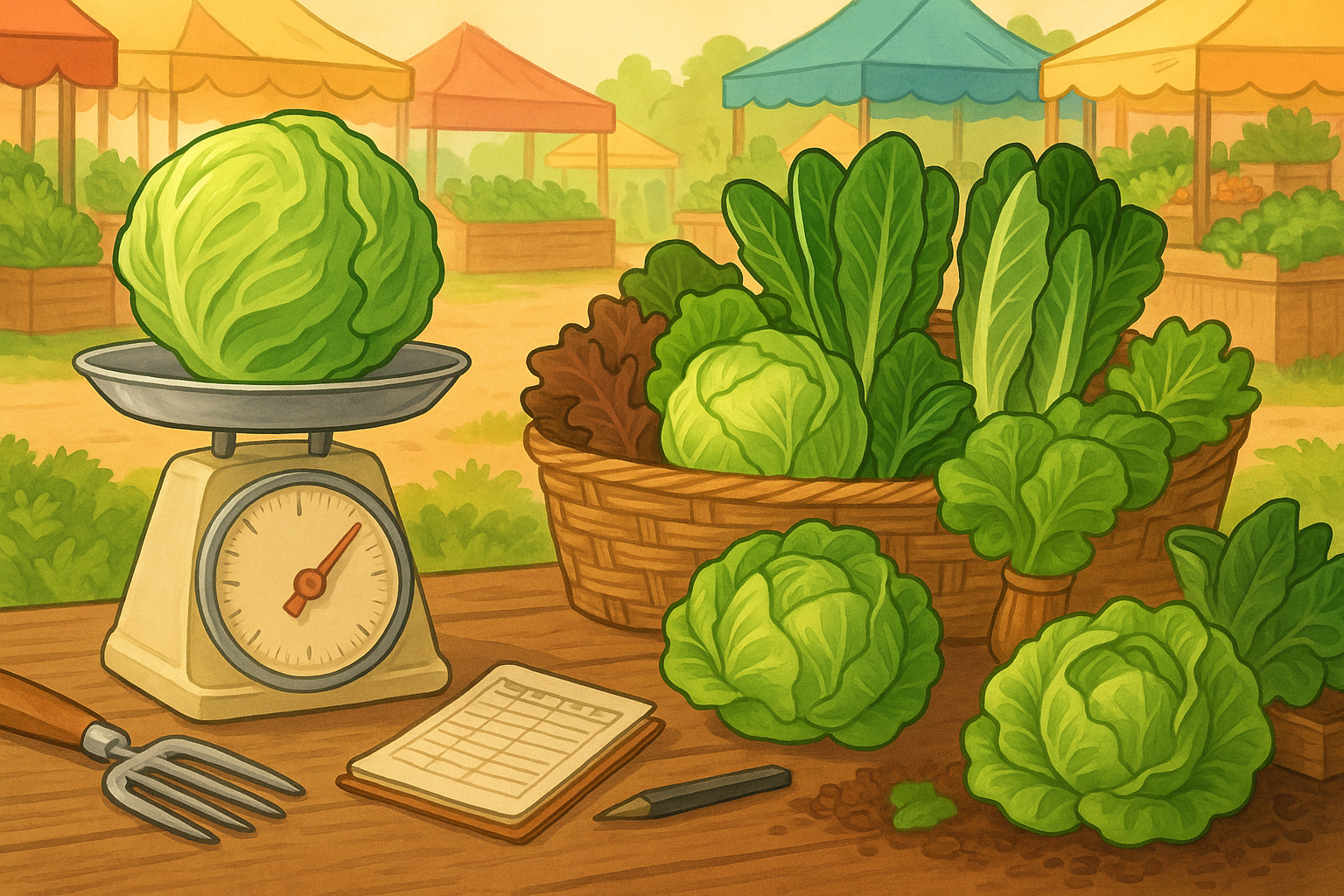
Estimating lettuce yield and revenue starts with understanding your growing space and the conditions in your area. On average, a well-maintained square foot of lettuce can yield about 0.5 to 1 pound per harvest under standard conditions. If you’re growing at a larger scale, this translates to roughly 24,000 to 30,000 pounds per acre in a productive season.
Yield can be significantly influenced by plant spacing—tighter spacing might produce more heads that are smaller in size, while wider spacing allows each head to develop fully. Lettuce variety also plays a role: for instance, romaine types tend to have slightly lower yield per square foot than leaf or butterhead varieties. Climate is another big factor; cool, mild weather typically produces better results than extreme heat, which can cause bolting or bitter leaves.
Pricing and Market Considerations
Lettuce prices are subject to market fluctuations and seasonality. For example, at local farmers’ markets, leaf lettuce might fetch $2 to $4 per pound during peak supply. However, during off-peak months or in regions with limited growers, prices can rise to $6 per pound or more. Wholesale prices are usually lower, around $1 to $2 per pound, but larger quantities can offset the lower margin.
Estimating Potential Earnings
Here’s a sample calculation to estimate potential earnings: if you grow lettuce on a 1,000-square-foot plot and average 0.75 pounds per square foot, you’d harvest 750 pounds per cycle. Selling at $3 per pound directly to customers could net you $2,250 per harvest. With multiple cycles per year—say, 3 to 4 in a temperate area—you could potentially gross $6,750 to $9,000 before expenses.
Tips to Boost Yield and Income
- Optimize planting density
- Choose varieties suited to your climate
- Time your harvests to align with higher market prices
Focusing on these strategies can help maximize your profit potential.
Profit Margins for Lettuce Growers
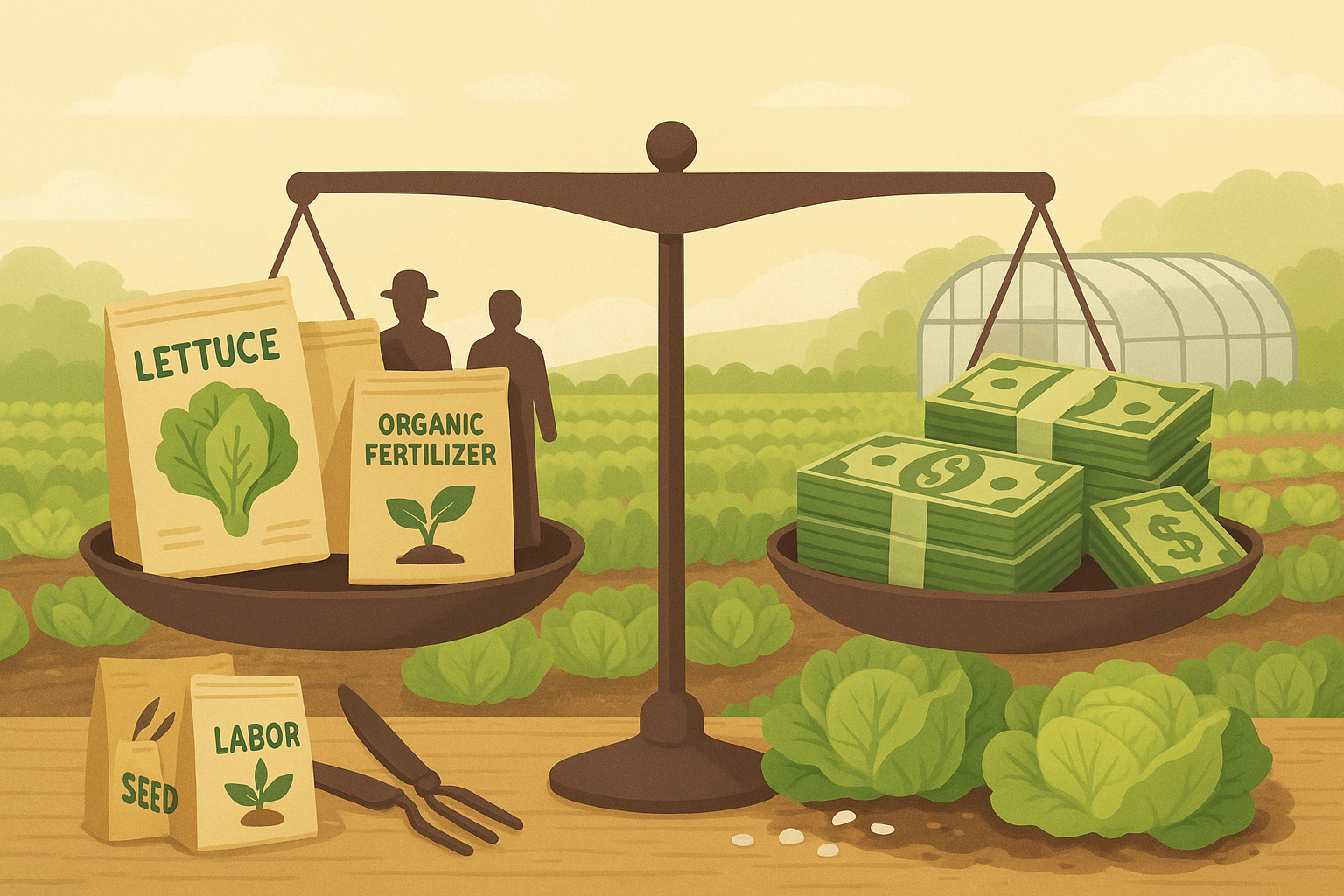
Profit margins for lettuce growers typically range between 10% to 30%, depending on factors like production scale, growing methods, and market access, according to recent industry data. Small-scale organic farms might see margins on the higher end, especially if they sell directly to consumers at farmers’ markets or through CSA subscriptions. On the other hand, larger commodity growers often face tighter margins due to volume-based pricing and increased competition.
Financial risks are always present in the lettuce business. Fresh-market lettuce is particularly vulnerable to price fluctuations—prices can plunge if there’s an oversupply or spike due to bad weather elsewhere. Rising input costs such as labor, fertilizer, and packaging can further squeeze margins. Yield losses from pests, disease, or unexpected weather events add another layer of risk, since lettuce is a perishable crop with little room for error.
Strategies to Improve Profitability
To boost profitability, many growers find success by building strong local markets. Selling directly to restaurants, grocery stores, or at roadside stands often brings higher, steadier returns. Adding value through washed, pre-cut salad mixes or branded packaging can help you stand out and command premium prices.
Diversifying your crop mix also protects your bottom line. If lettuce underperforms or market prices drop, having other greens or seasonal vegetables on hand helps buffer income shocks. Investing in efficient irrigation and pest management practices further reduces waste and production costs.
Ultimately, careful planning, creative marketing, and staying nimble in response to market changes are key strategies for lettuce growers aiming to maximize profits and manage financial risk.
Key Factors Influencing Profitability for Lettuce Growers
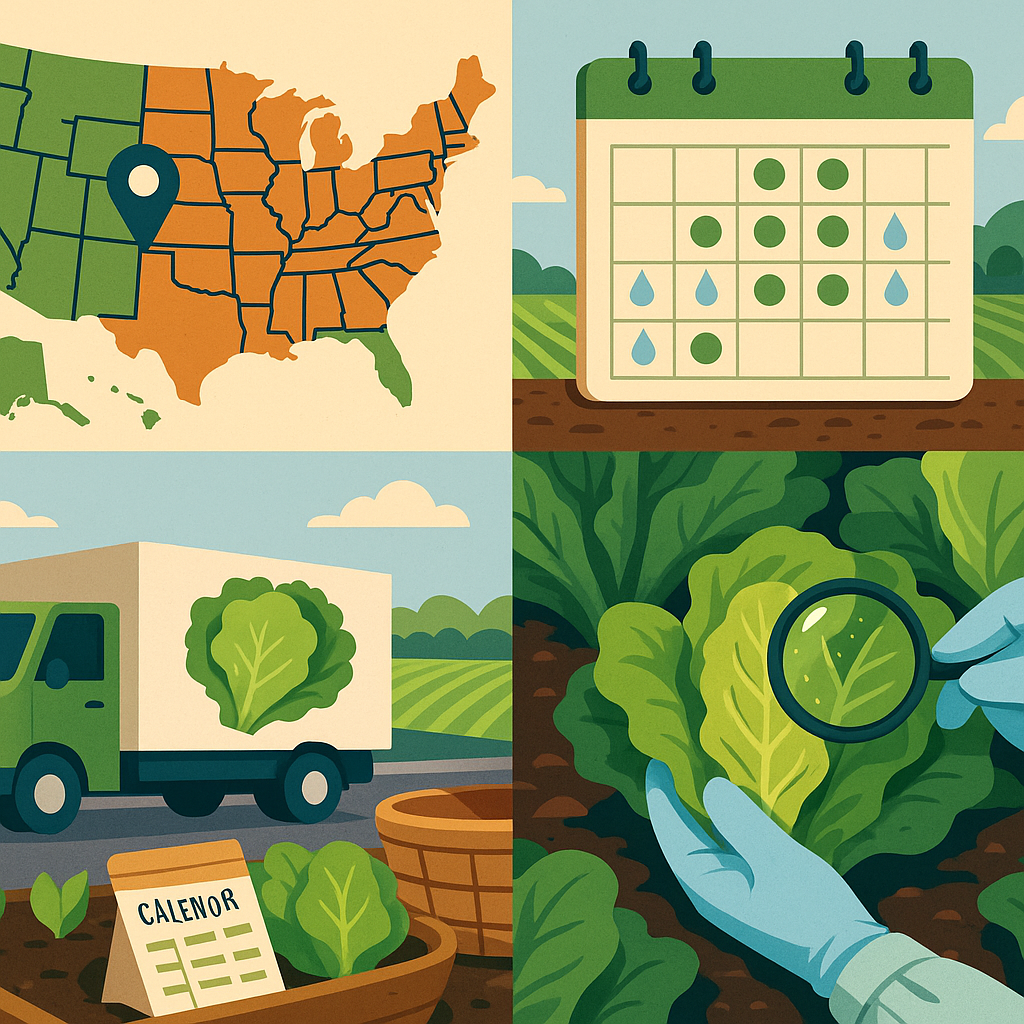
Several key factors can make or break profitability for lettuce growers, and understanding these can help maximize returns.
Market access stands out as a major influence: farmers with established relationships with local restaurants and steady spots at farmers’ markets often enjoy higher prices and repeat business. In contrast, those selling to wholesale buyers may face lower prices but benefit from moving larger volumes.
Crop timing is another crucial factor. Savvy farmers plan their planting schedules to hit the market just when prices spike—such as early spring or late fall—minimizing competition and maximizing income.
Geographic location also plays a part. Growers near urban centers or in regions with longer growing seasons may have a distinct advantage over those in remote or less hospitable climates.
However, even the best-laid plans can be upended by external risks such as unpredictable weather, disease outbreaks like downy mildew or aphid infestations, and labor shortages, all of which can seriously affect yields and profits.
Because lettuce is highly perishable, efficient supply chain management is essential. Cold storage, reliable transportation, and quick turnaround from harvest to sale can make the difference between securing premium prices and suffering costly spoilage.
Real-world growers often take several steps to create a more resilient business, including:
- Diversifying market channels
- Staggering plantings for continuous harvests
- Investing in basic crop protection measures
- Building strong logistics partnerships to hedge against risks
Growing lettuce can be both rewarding and profitable, but it comes with its own set of considerations.
On the cost side, expenses can range from seeds, soil amendments, and irrigation to labor and pest management. Revenue potential is promising, especially for fresh, local, or specialty varieties that can command premium prices; however, profit margins are highly sensitive to market demand and the efficiency of your operation.
Risks like unpredictable weather, pest outbreaks, and fluctuating prices can all impact your bottom line, making it crucial to factor in a buffer for unexpected setbacks. Key determinants of profitability include your location, access to reliable markets (e.g., farmers’ markets, restaurants, CSA programs), scale of production, and your willingness to invest in efficient growing practices.
Local market research is especially vital—before planting, talk to buyers in your area, visit markets, and analyze competitors to understand what sells and at what price points. Detailed planning—such as crop rotation, succession planting, and input budgeting—helps mitigate risks and maximize yields.
Ultimately, ask yourself whether lettuce farming fits your personal goals, timeline, and available resources. If you enjoy hands-on work, have a knack for planning, and are ready to adapt to changing conditions, lettuce growing might be a good fit.
For those brand new to farming, starting small and scaling up as you gain experience is a smart way to test the waters, improve your skills, and avoid costly mistakes.
